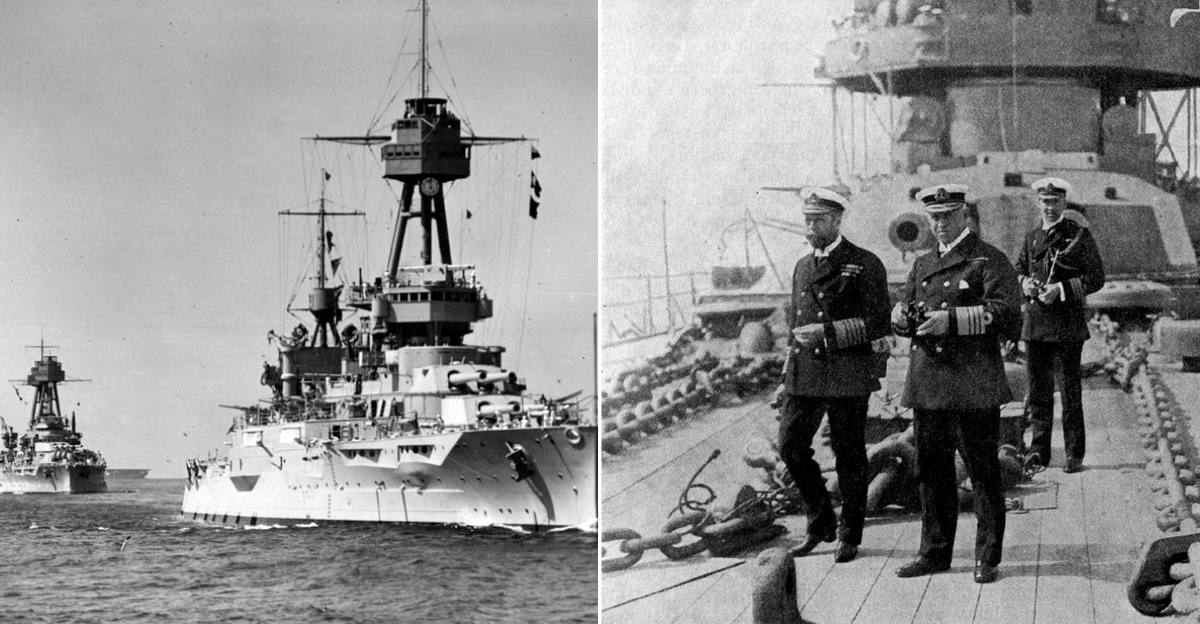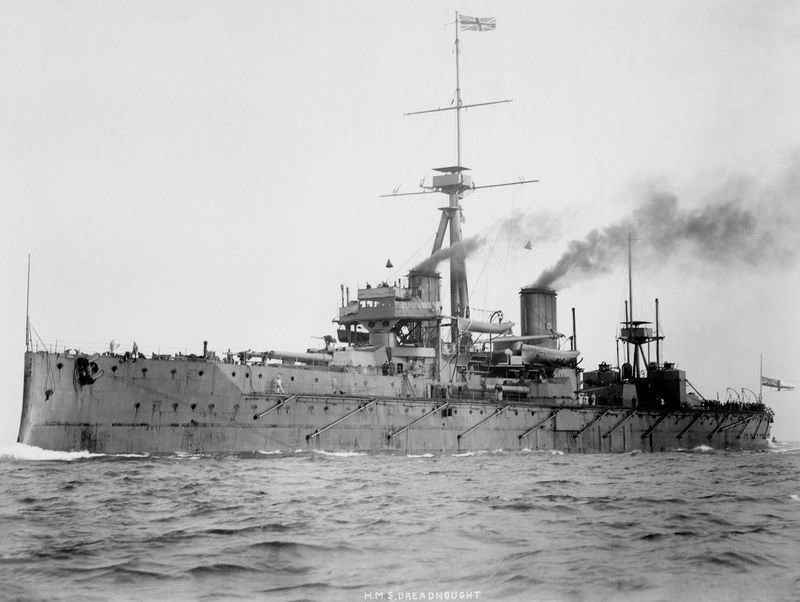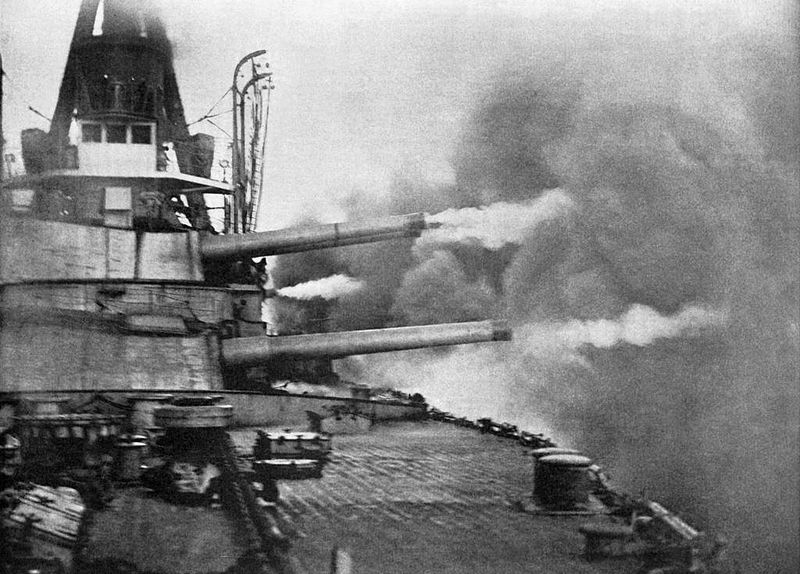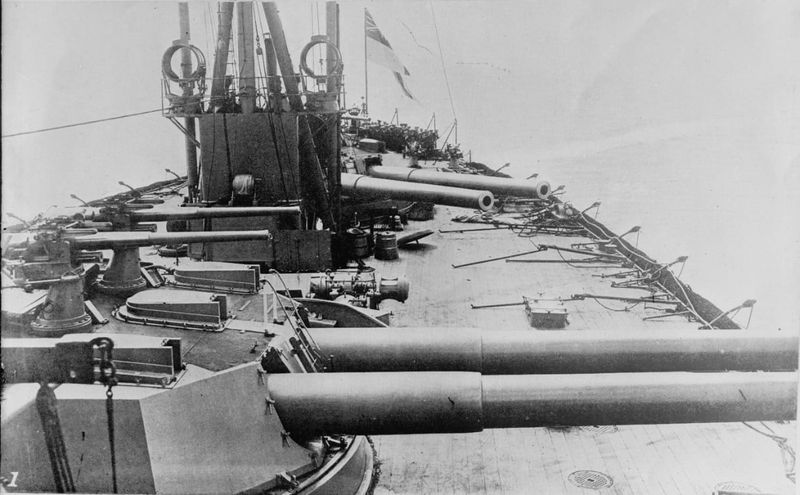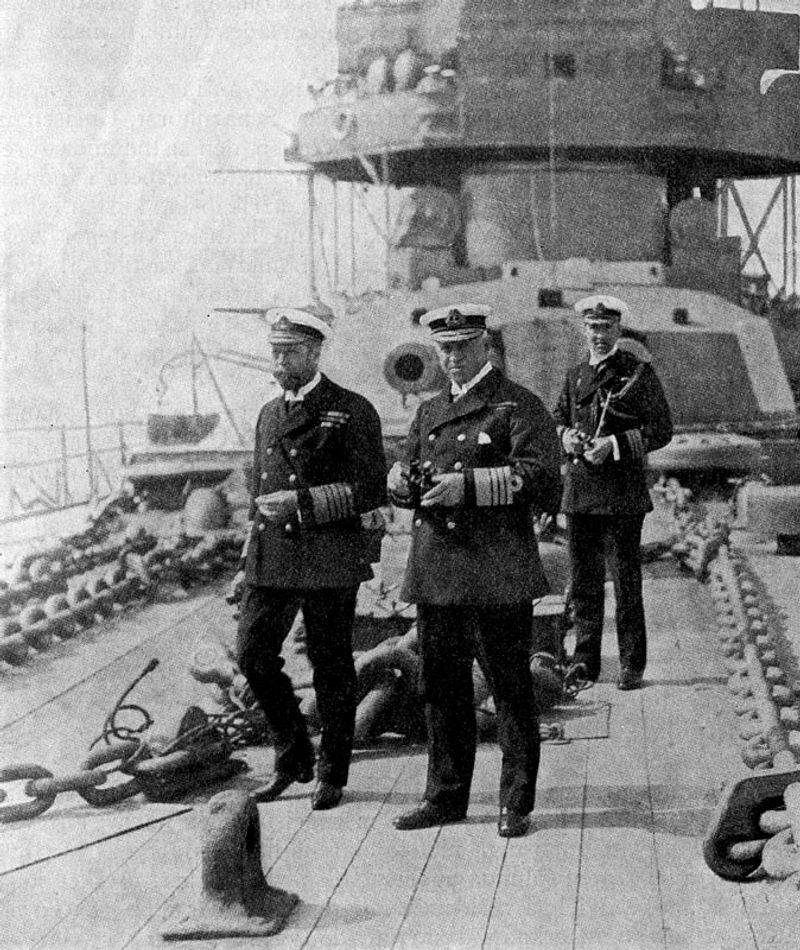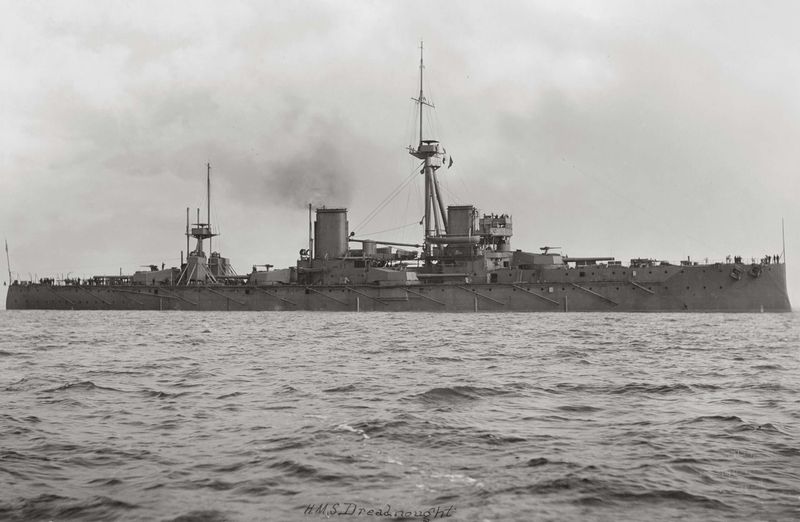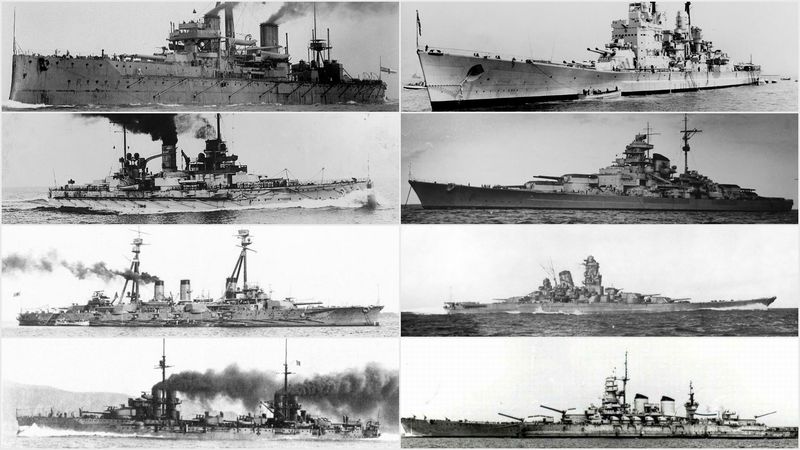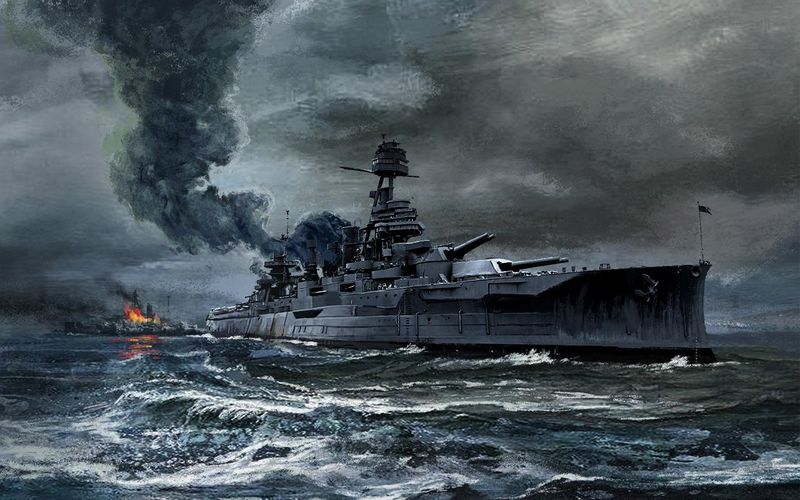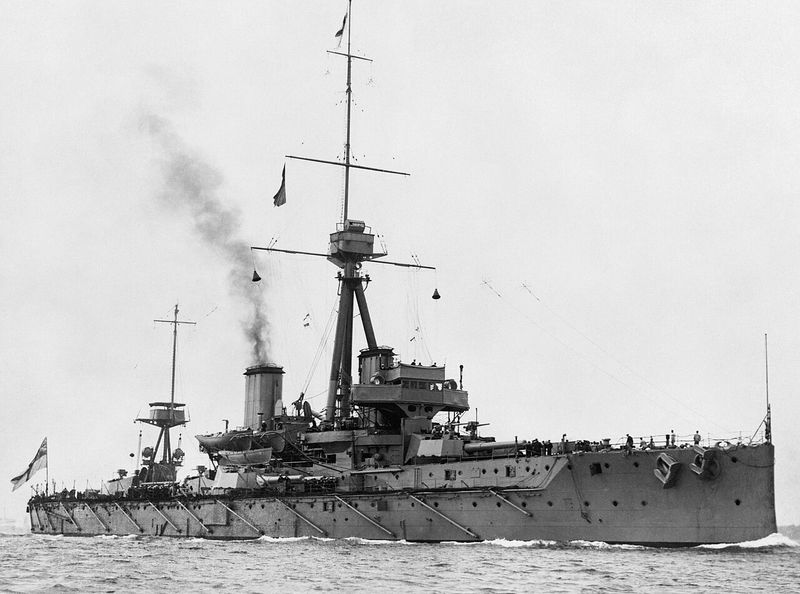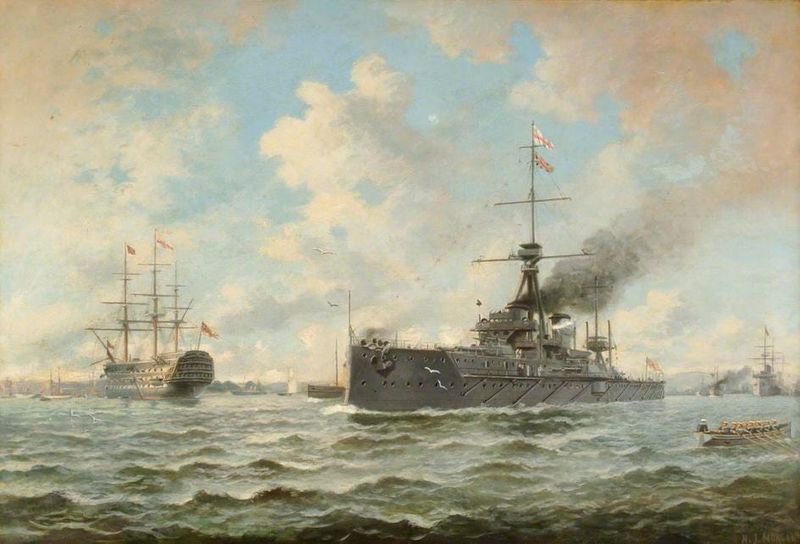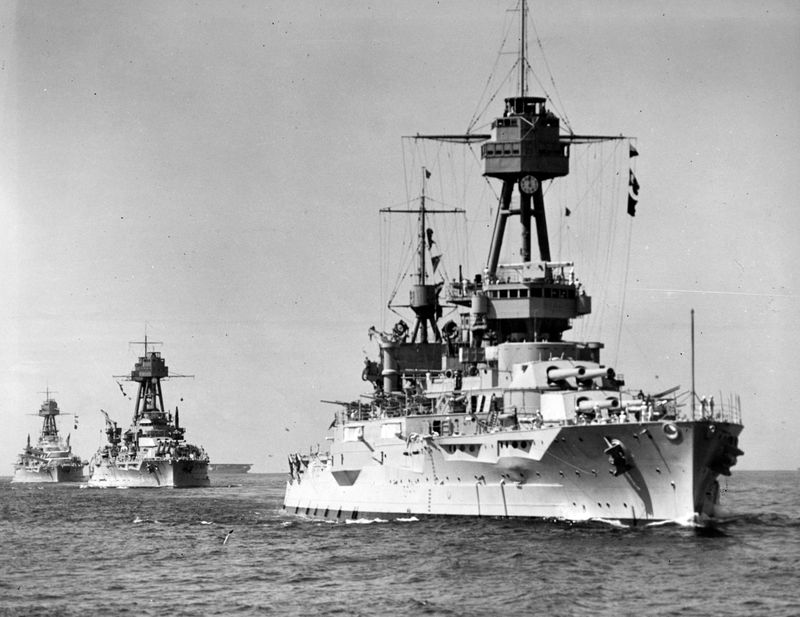The launch of HMS Dreadnought in 1906 marked a pivotal moment in naval history. This revolutionary battleship not only made previous fleets obsolete overnight but also set new standards in naval engineering, strategy, and power. Built with an emphasis on heavy-caliber armament and unparalleled speed, the Dreadnought sparked a global arms race and redefined naval strategy across the world.
Its influence extended beyond its own class, laying the groundwork for future innovations in naval warfare. Let’s explore ten profound ways in which the Dreadnought forever altered the course of naval history.
1. It Made Every Other Battleship Instantly Obsolete
In 1906, the debut of HMS Dreadnought sent shockwaves through naval forces worldwide. With its revolutionary design, it rendered all existing battleships obsolete instantly. This seismic shift in naval warfare marked the end of an era, compelling navies to rethink their fleets.
Dreadnought’s all-big-gun approach and superior speed set a new standard, making older battleships seem like relics of the past. The world stood in awe as nations scrambled to catch up. This overnight transformation not only changed warship design but also elevated naval ambition to new global heights.
2. It Standardized Heavy-Caliber Armament
The Dreadnought revolutionized naval firepower with its all-big-gun configuration. Equipped with ten 12-inch guns, it set a precedent for battleship armament. Gone were the days of mixed calibers; the focus was now on standardized heavy guns for long-range accuracy.
This change in armament philosophy allowed battleships to engage enemies from greater distances with devastating impact. It was a game-changer, emphasizing the importance of firepower over quantity. The world soon followed suit, as navies embraced this new standard in pursuit of naval supremacy.
3. It Introduced Steam Turbines to Battleships
HMS Dreadnought was a technological marvel, introducing steam turbines to battleships for the first time. This groundbreaking innovation allowed it to reach speeds of 21 knots, outpacing any battleship of its time.
The adoption of steam turbines revolutionized naval propulsion, prioritizing speed and efficiency over traditional engines. This advancement set a new benchmark for naval engineering, influencing future designs. The faster, more maneuverable Dreadnought demonstrated the strategic advantage of superior speed in naval warfare, redefining what battleships could achieve on the high seas.
4. It Triggered a Global Naval Arms Race
The launch of the Dreadnought ignited a naval arms race that reshaped global military priorities. Nations around the world, particularly Germany and the USA, raced to build their own dreadnought-class ships.
This competitive frenzy escalated tensions and pushed technological innovation to new heights. The need to match or surpass the Dreadnought’s capabilities drove countries into an arms buildup, altering the balance of power. The dreadnought era, marked by rapid shipbuilding, defined pre-World War I geopolitics and demonstrated the ship’s far-reaching impact on global military strategy.
5. It Redefined Naval Strategy and Tactics
With the advent of the Dreadnought, naval planners were forced to rethink strategy and tactics. Its long-range artillery redefined naval engagements, emphasizing powerful, long-range gunnery duels.
Fleet formations and engagement ranges were reconsidered in light of this new firepower, leading to a shift in naval doctrine. The Dreadnought’s influence on strategy was profound, shaping how naval battles were fought and won. Its legacy in tactical planning is a testament to its transformative role in maritime warfare, leaving an indelible mark on naval history.
6. It Gave Birth to the Term “Dreadnought” as a Class of Ship
The iconic design of HMS Dreadnought was so groundbreaking that it inspired a new classification of warships. All similar battleships built afterward were dubbed “dreadnoughts,” while older models were labeled as “pre-dreadnoughts.”
This classification underscored the ship’s revolutionary impact on naval architecture. The term “dreadnought” became synonymous with advanced battleship design, reflecting the ship’s lasting legacy. Its introduction marked a clear delineation in battleship evolution, setting the stage for subsequent innovations in naval warfare.
7. It Shifted Naval Budget Priorities Worldwide
The Dreadnought’s arrival shifted naval budget priorities across the globe. Nations began investing in fewer but more powerful warships, concentrating resources on these formidable vessels.
This strategic focus on quality over quantity led to a reevaluation of naval expenditure, prioritizing dreadnought-class ships. The emphasis on firepower and advanced technology transformed naval procurement strategies, reflecting the changing landscape of maritime warfare. The Dreadnought set a new standard for naval investment, illustrating its profound influence on military finance and planning.
8. It Made Naval Power the Ultimate Global Status Symbol
Owning dreadnoughts became a symbol of national pride and global stature. These ships were more than just military assets; they were a testament to a nation’s technological prowess and ambition.
For rising empires, dreadnoughts were the ultimate status symbol, showcasing their place on the world stage. This elevation of naval power as a measure of international influence marked a significant cultural shift. The Dreadnought era redefined what it meant to be a global power, intertwining military capability with national identity.
9. It Encouraged the Development of Better Naval Armor
To counter the formidable firepower of dreadnoughts, shipbuilders were compelled to develop better naval armor. This push for enhanced protection led to technological advancements in hull design and armor materials.
The need to withstand dreadnought-level firepower drove innovation in naval engineering, resulting in more robust and resilient battleships. This focus on defensive capabilities became a hallmark of naval architecture, reflecting the evolving nature of maritime warfare. The Dreadnought’s influence extended beyond firepower, shaping the very structure of naval vessels.
10. It Laid the Groundwork for the Super-Dreadnoughts and Aircraft Carrier Dominance
Though the dreadnought era was brief, its principles paved the way for future naval advancements. The concept of super-dreadnoughts, with even greater firepower and armor, emerged as a direct continuation of this legacy.
Furthermore, the emphasis on long-range capabilities influenced the rise of aircraft carriers as dominant naval forces. The Dreadnought’s impact on naval warfare extended beyond its own class, shaping the evolution of naval strategy and ship design for decades. Its legacy is evident in the ever-evolving nature of naval power.
